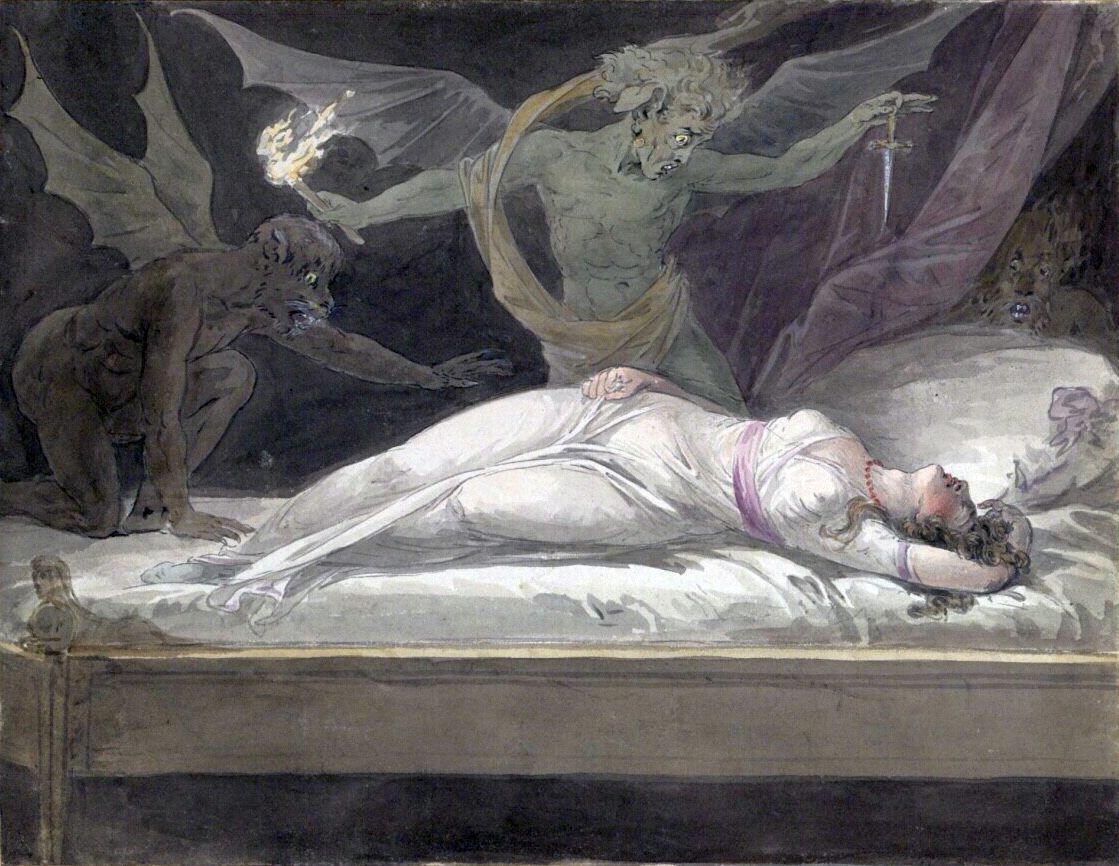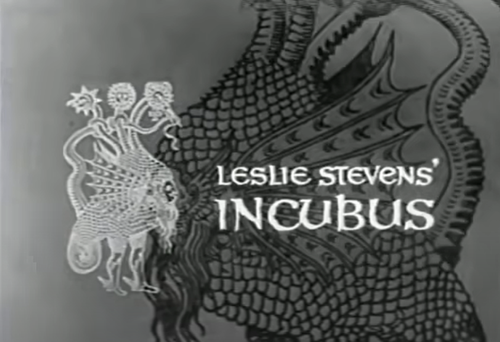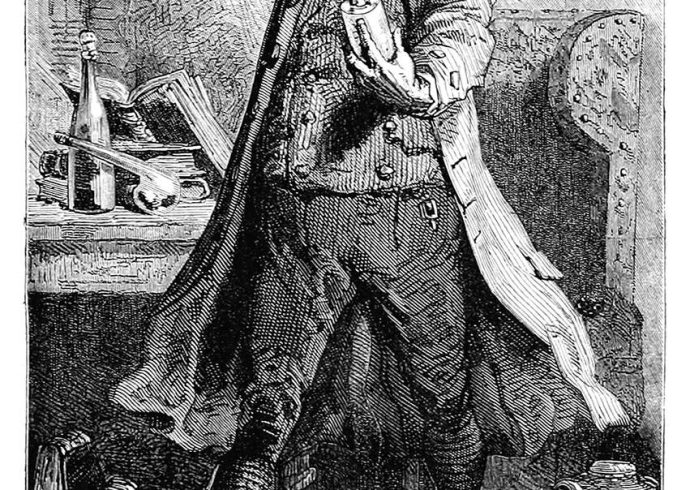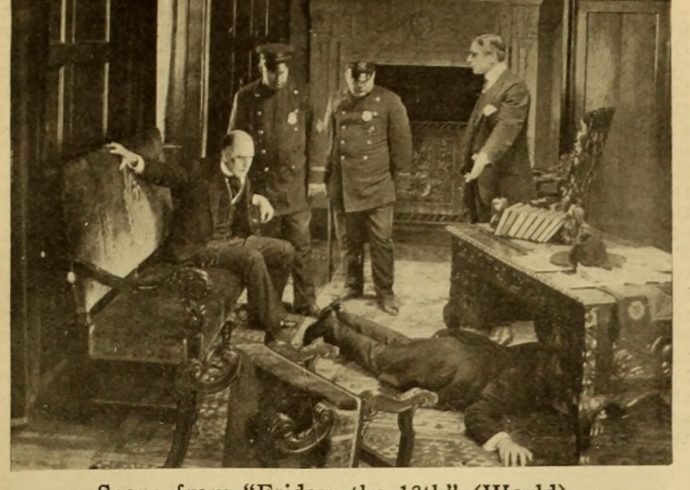
Surrealist Horror: A review of “Incubus” 1966
What happens when creators of science fiction stories intended for television decide to produce a feature-length film based on the supernatural? In the 1960’s, the filmmakers would be Leslie Stevens, Conrad L. Hall, and Dominic Frontiere from “The Outer Limits” (1963-1965) fame. Directed and written by Stevens, “Incubus” was meant to be filmed in the style of “The Outer Limits” although it could also have been after “Alcoa Presents: One Step Beyond” (1959-1961) hosted by John Newland due to the supernatural element of the horror film. Unlike “The Outer Limits” and even “The Twilight Zone”, the stories in the half-hour long episodes of “One Step Beyond” are all based on real-life supernatural incidents. Could “Incubus” fit into this mold? As unnerving as the story’s premise sounds, the answer is yes.
While “Incubus” has been compared to “Carnival of Souls” (1962), the most intriguing part about the one hour and thirteen-minute-long film is that it seems to take place both outside of time as well as inside of time, not possessing an established decade or era when the unfolding story occurs. To make “Incubus” seem even more otherworldly, Stevens, along with producer Anthony M. Taylor selected Esperanto as the dialogue language.
Setting the mood even before the film begins, the opening titles for “Incubus” include images which look like they were copied from the Malleus Maleficarum, written by Heinrich Kramer and first published in 1486, along with images of talismans, even Baphomet, complete with film crew roles in Esperanto.

William Shatner is a wounded soldier who settles in a small seaside hamlet called Nomen Tuum (Latin for “Your Name”) with his sister Ann Atmar, with the intent of seeking healing from the Deer Well – which reportedly contains miraculous healing waters. Deer symbolizes purity and innocence in Christianity, which plays a significant role in this good versus evil story. The well is located near an ancient oak tree upon a hill surrounded by a field of wildflowers not far from a monastery where monks still live.
The story begins with a scene at Deer Well where a visibly ill man is standing at the well taking a swig of the water in a cup when he suddenly spits it out, tasting the salt in it. A succubus played by Allyson Ames starts enticing him as she sits on a wide branch of the nearby oak tree, putting him on the chase to the nearby beach. Leaping into the ocean water, the man drowns at the foot of Ames, which is firmly planted upon his head, face down into a bed of sand and shells. Attempting to bury his body in the sand, a group of black hooded figures come into view as they walk along the beach. The leader, Eloise Hardt, speaks with the most recent sacrifice made by Ames, who is getting tired of luring men with tainted souls to their deaths in order to please their evil god called Incubus. Instead, she wants a challenge: bringing a good, holy man down to his death as a sacrifice. Hardt warns her, however, not to do so, for if she does, she will be risking her own life. Deciding against the words of Hardt, Ames goes her own way into Nomen Tuum. After surveying the area, she follows William Shatner from the mission cathedral to his rustic home where he lives with his sister Ann Atmar.
Ames approaches Shatner while he is chopping wood at home, asking for directions to a specific place. Acting fatigued, she is offered food and rest by Shatner, who spreads out a blanket on the grass for her to sit on. He calls to his sister Atmar to bring some freshly baked bread, along with some cheese and wine. Ames continues to talk about her journey, and drinking the water from the Deer Well, which seems to have affected her judgement. Before she knows it, she starts to develop feelings for Shatner, and he reciprocates, as a solar eclipse takes place. Possibly due to the nature of such celestial events, Ames tries to comprehend if this is an omen of some kind, while Shatner simply tells her that some people believe it is a “dragon swallowing the sun”. Are dragons really believed in the story, along with succubus, evil deities, and the Black Mass? It seems like they are. Meanwhile, Atmar is standing in the doorway of the house, looking up at the eclipse, and the sun as it emerges from behind the moon, leaving her blind. Not wanting Ames to leave, Shatner follows her across the fields, down a wide river shown at its full length, to the ancient oak tree where they kiss.
Shatner remains unaware of the true nature of the woman he has fallen in love with, even when he finally carries her into the cathedral after Ames falls asleep in the field. Resting her body in front of the altar, Ames suddenly awakens, seeing numerous holy statues bombarding her vision, as she panics and runs down the center aisle of the cathedral. With the camera superimposed here, the viewer actually thinks the carved lifeless statues have come to life and attack Ames. Retiring to one of the pews, Shatner ponders just what happened, when his sister Atmar enters the sacred place and kneels beside him. Is his life in danger? Should he forget about Ames? Things start to come to light when he comes across a dilapidated building over the crest of a hill where Ames and her sisters take part in nefarious activities invoking the forces of evil – and attempt to make Atmar a sacrifice to Incubus.
Long considered to be a lost film until it was rediscovered at Cinematheque Française in 1996, “Incubus” was restored and released on both VHS and DVD by Fox Lorber Home Video in July 2001. The film never saw a theatrical release, and no marketing materials were made during the time of the film’s release: no press kits, movie posters, or stills. “Incubus” premiered at the San Francisco Film Festival in 1966. Unsuccessful in securing distribution for the film by Stevens in the United States, France showed interest in the art film, premiering it in November 1966.
“Incubus” ranks high when it comes to atmosphere, with the cinematography from “The Outer Limits” camera man Conrad L. Hall. Camera shots of every type are utilized: up shots through the ocean’s water, point of view shots, perspective shots, zoom shots, and down shots. It is fair to say that it is the cinematography that really makes this film, along with the prose poetry dialogue translated from English to Esperanto. William Shatner turns in the best performance as the protagonist, even with speaking dialogue in an unfamiliar language. Ann Atmar turns in decent support as Shatner’s sister, who undergoes her own personal crisis being blind until she reclaims her sight during the final scene of the film. Allyson Ames is the mysterious woman with siren-like capabilities, as do the rest of her sisters. Their main purpose is to lead all of the lost, tainted souls to their god of evil, Incubus, played by the Serbian born actor Milos Milos. Not surprisingly, the succubus women in the story all look alike: statuesque with long pale hair tied back in a bow resembling bat wings. Dominic Frontiere composed the ominous, ethereal music which sounds like a note rearrangement from the opening to the theme song for “One Step Beyond”. With the use of glowing misty fog during the final scene of the film, the use of oil lamps as the only source of internal light at night, the garments worn by the main characters suggest the events could literally happen to anyone at any time during human history. While “Incubus” was primarily shot at Big Sur Beach, Mission San Antonio de Padua, and Santa Catalina Island in California, the spoken Esperanto suggests the setting could be seventeenth or early eighteenth-century Europe instead of taking place in America. “Incubus” was Shatner’s last filming project before he started working on the famous television series “Star Trek” which made its debut in 1967.
Now available for viewing on Youtube, “Incubus” remains a unique cult film of its kind, especially with the use of Esperanto as the language of dialog, as well as having appeal to fans of the horror genre and of course William Shatner fans.
Image Credit: Vincenz Georg Kininger, Public domain, via Wikimedia Commons.


